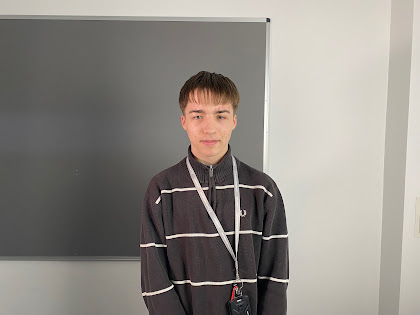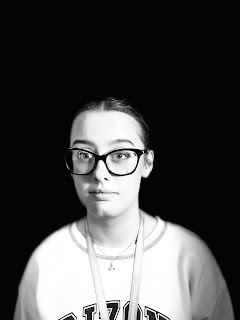P3 - Explain lighting settings that may be used to record footage
Annotate diagrams or videos
Three point lighting:


Two point lighting:

Chiaroscuro:
Tungsten lighting:
- Colour temperature: Tungsten produces a warm yellow/orange tone that can accurately mimic natural daylight, which makes it ideal for providing ambience.
- Affordability: Tungsten bulbs are relatively cheap and are widely available, making them a cost efficient options for lighting setups
- Durability: Tungsten bulbs are durable and can withstand being turned on and off, which makes them ideal for studio lighting
- Light Quality: Tungsten lights produce high quality, low flickering lights making them ideal for studios
- Energy Efficient: Tungsten lighting is not great as an energy-efficient option and it generates a lot of heat. This can result in higher electricity bills and may cause them to be an unsuitable option fir long duration use.
- Lifespan: Tungsten bulbs have a relatively short lifespan compared to other lighting options
- Safety: These bulbs can get very hot and can become a fire hazard if not used properly. They also contain mercury which can be dangerous if the lights break
- Limited Control: Tungsten bulbs do not offer as much control as other lighting options such as LED making it harder to adjust intensity.
HMI lighting
HMI lighting (Hydrargyrum medium-arc iodide lighting) is a type of lighting that is commonly used in film, television, and photography for its high colour temperature, brightness, and daylight-like qualities; some HMI lighting include:
Film and television production: HMI lighting is commonly used in film and television production as a key light, fill light, or backlight. It is particularly useful for outdoor scenes or daytime shoots where natural lighting is needed.
Photography: HMI lighting is often used in commercial photography, especially for product and fashion shoots. The high color temperature and brightness of HMI lights make them ideal for creating bright and crisp images.
Stage lighting: HMI lighting can also be used in stage lighting for theater and live events. The high output and daylight-like qualities of HMI lights can help create a natural-looking lighting design.
Industrial and commercial lighting: HMI lights are also used for industrial and commercial lighting applications, such as in warehouses, factories, and sports arenas. They are particularly useful for outdoor areas where high levels of illumination are needed.
Overall, the high output, colour temperature, and daylight-like qualities of HMI lighting make it a popular choice for a wide range of applications where bright and natural lighting is required.
Here are some pros of HMI lighting:
High Output: HMI lights are known for their high output of light, making them ideal for lighting large areas or scenes that require a lot of light. This is especially useful for outdoor shoots or other situations where natural light is not sufficient.
Daylight-like Quality: actors on set.
Color Rendering Index (CRI): HMI lights have a high Color Rendering Index (CRI), which means they are able to accurately reproduce colors in the scene. This is particularly important in film and photography, where color accuracy is crucial for producing high-quality images.
Versatile: HMI lights can be used in a variety of settings, from film and television production to stage lighting and industrial applications. They can also be used in combination with other lighting types, such as LED lights, to create a custom lighting design that meets specific needs.
While HMI lighting offers many benefits, including high colour accuracy, high light output, and a wide range of colour temperatures, there are also some disadvantages.
Here are some cons of HMI lighting:
Cost: HMI lighting and bulbs are generally more expensive than other types of lighting. The cost of HMI lighting can be a significant barrier for small productions or independent filmmakers.
Fragile: HMI bulbs are fragile and can be easily damaged if they are bumped. The bulbs are also sensitive to changes in temperature and humidity, which can shorten their lifespan making them an obsolete option for independent filmmakers.
Heat: HMI bulbs generate a significant amount of heat, which can make them uncomfortable for crew to work with. The heat can also pose a risk of fire if the fixtures are not properly ventilated, meaning there are many checks needed from crew before filming begins..
Power Consumption: HMI lighting fixtures require a lot of power to operate. This can be a challenge on location shoots where power sources may be limited. This can be costly and can mean independent filmmakers won't be able to afford to pay for the power consumption
Setup Time: HMI lighting fixtures can take a long time to set up. This can be a challenge for productions with tight schedules or limited resources. It may be harder for independent filmmakers as they may not have a big crew helping to setup.
On camera lighting
On-camera lights can be particularly useful in situations where there is not enough ambient light to properly illuminate the subject, such as in indoor settings or at night. They can also be used to help create a specific mood or effect, such as adding a warm or cool tone to the image.
Additionally, on-camera lights can help to reduce shadows and create a more even distribution of light across the subject, which can result in a more natural and pleasing image. They can also be used to provide a catch light in the eyes, which can make them appear brighter and more alive.
Overall, on-camera lights are a useful tool for photographers and videographers who need to work in low-light conditions or who want to create a specific lighting effect.
Improved image quality: On-camera lights can provide additional illumination that can help to improve the overall quality of the image or video footage. This can be particularly important in low-light situations where the camera's built-in flash or ambient lighting may not be sufficient.
Enhanced control: On-camera lights typically offer a range of settings and adjustments that can help to fine-tune the lighting to achieve the desired effect. This can include adjusting the brightness, color temperature, and angle of the light.
Convenience and portability: On-camera lights are typically small and lightweight, making them easy to carry and use on location. They also don't require any additional stands or mounting equipment, which can make them a convenient option for photographers or videographers who are working alone or in tight spaces.
Versatility: On-camera lights can be used in a variety of settings, including indoor and outdoor environments, and can be adapted to suit different types of photography or videography, such as portraits, interviews, or product shots.
Cost-effective: On-camera lights are often more affordable than larger studio lighting setups, making them a cost-effective option for amateur photographers or videographers who want to improve their lighting without breaking the bank.









Comments
Post a Comment